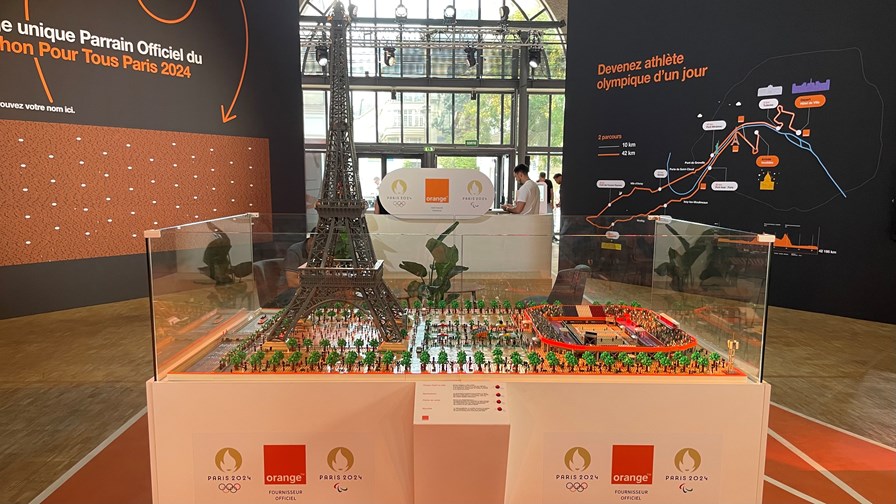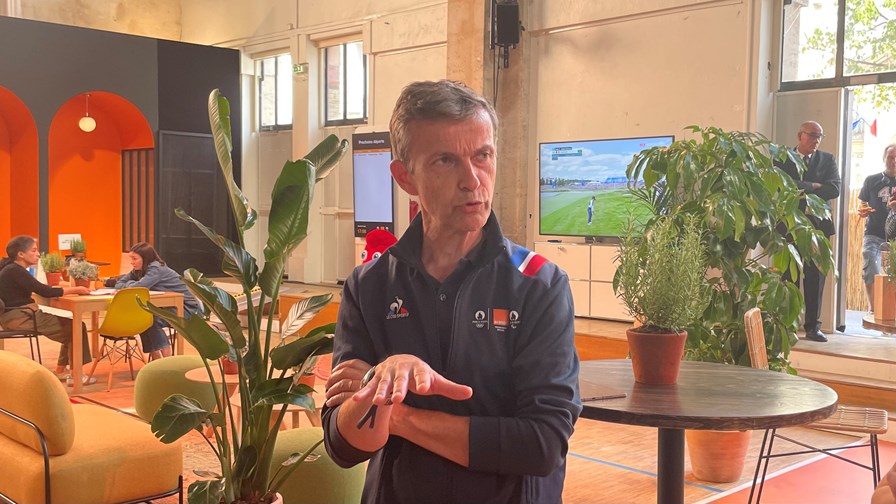
- Orange is the sole connectivity provider at the Paris Olympics Games 2024
- The French telco says it hasn’t had any networking disasters but faced numerous challenges associated with its 5G private network setup
- Given the scale of demands during the sporting event, the company faces the same level of pressure as the Olympians themselves, according to industry analyst
PARIS, FRANCE – Orange faced several high operational hurdles related to the deployment of its 5G private network during the Paris Olympics Games 2024, but the French telco group is currently on track for a connectivity gold medal for its service delivery throughout the landmark sporting event.
At a briefing held at the Orange Olympic Village in Paris, Bertrand Rojat, chief technology and information officer at Orange Events (pictured below), explained the operator’s role as the sole connectivity provider at the massive event, which ends on Sunday, 11 August after more than two weeks full to the brim of sporting endeavours. He said the telco’s plan “has been working very well” and no incidents have occurred so far.

Bertrand Rojat, chief technology and information officer at Orange Events, gives a briefing at the Orange’s ‘Olympic village’ – the Halle des Blancs Manteaux d'Orange in Paris.
One of the main technical challenges the telco faced was deploying a private 5G network for the first time. Rojat explained that after the rollout, Orange needed to optimise the network to deal with handovers because “you have many cells and you need to be able to switch from cell to cell very seamlessly”.
Rojat noted that the telco had only two days to complete the network’s optimisation, far less time than the 10 days such a task would usually be granted under non-Olympian conditions.
Another challenge was related to the logistics of managing connected devices that were used throughout the Olympics.
He cited the use of Samsung Galaxy S24 smartphones acting as cameras for video streaming. For example, they were used aboard boats that were competing in the sailing events. Once installed and set up on the vessels, the Orange team has no physical access to those devices. “So, we worked a lot on the software running on the device to make sure that we can continue to control the device,” the Orange executive explained.
In addition to the smartphone-as-camera use case, Orange also had to manage mobile broadcast cameras that transmit 4K streams and are required to deliver “very high-quality, very stable” content from multiple angles at three of the Olympic venues.
Orange also used a 5G-connected camera (pictured below) for instant transmission of photographs using its private 5G network.

The cameras and resulting images have been used by around 40,000 photographers and press agencies, while around 20,000 photos were transferred across Orange’s network in just one week of Olympics action.
To aid the significant connectivity needs of spectators and to run certain business-to-business (B2B) services, Orange enhanced its non-standalone public 4G and 5G networks.
The telco has also used a push-to-talk (PTT) communications service on 13,000 devices from Crosscall to help with the organisation on the ground. Rojat noted that this solution has been very cost effective as well as very “responsible in terms of deployment”, as it was using the mobile network with a special mechanism to prioritise the PTT communications over others. “We had to do quite a bit of work to handle the capacity,” the executive noted.
Asked about any advice for the organisation of the next Olympic Games in Los Angeles in 2028, Rojat suggested using more Wi-Fi and mobile rather than wired networks. He explained that with fixed networks, one of the biggest challenges facing the French telco is the deinstallation of the cables in a way that allows the assets to be re-used and deployed in its day-to-day production network. Rojat added that ensuring sustainability across its Olympics operations has been one of the major challenges for the telco, which opted for low-energy solutions wherever possible.
During the briefing, Orange also showcased a mock-up of its network architecture spread across some of the Olympic sites in Paris (pictured above).
Commenting on Orange’s role as connectivity provider at the Olympics, Dario Talmesio, research director for service provider strategies and regulation at analyst house Omdia, told TelecomTV that providing B2B connectivity to broadcasters and partners, such as merchants and ticket operators, is “crucial for such a large-scale event [with] in-person visitors and global viewers”.
“The stakes are high… there is no room for errors. In some ways Orange has the same performance pressure as the Olympic athletes”, he added.
According to the analyst, the event is more than just a technology challenge. “It’s about planning, implementation and managing a complex, large-scale operation with tight schedules. The emphasis on operational efficiency is as important as the one on technology management,” argued Talmesio.
He further stated that most telcos that host the Olympics typically use the occasion to showcase “fancy and futuristic technologies”, whereas Orange appears to have focused on “the core of the matter: Resilience, connectivity, security, redundancy and quality”. In his words, connectivity might be invisible to consumers, but “it is what takes champions into our homes.”
You can find out more about the technical capabilities that the telco has relied on during the Olympics here.
- Yanitsa Boyadzhieva, Deputy Editor, TelecomTV
Email Newsletters
Sign up to receive TelecomTV's top news and videos, plus exclusive subscriber-only content direct to your inbox.




